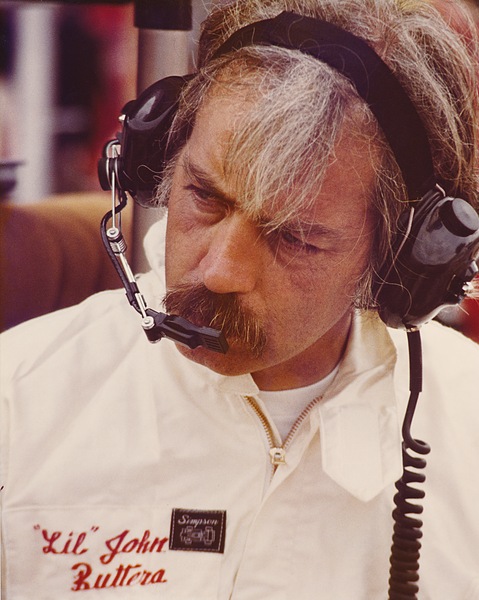
Motorsports Series:
“Lil John” built championship-winning dragsters, Funny Cars and Pro Stockers for the biggest names in the sport in the 1960s and ‘70s, including Danny Ongais, Don “Snake” Prudhomme, Tom “Mongoose” McEwen and Don Schumacher. The Kenosha, WI native and “B” in R&B Automotive, moved to Southern California after a chance meeting with 1990 inductee Mickey Thompson at the 1969 U.S. Nationals. Characteristics of a Buttera Funny Car were simplicity, elegant design, a low-slung, wicked stance — and flawless craftsmanship. His cars not only looked amazing, they won races and championships. Later, the superb machinist built award-winning street rods and motorcycles and helped pioneer billet wheels and components. In 1987, working on a shoestring budget, he redesigned a castoff Eagle chassis and put it on the third row at the Indy 500, winning the prestigious Clint Brawner Mechanical Excellence Award. During the ‘80s and ‘90s, Buttera designed parts and components for a variety of companies, including Edelbrock, Harley-Davidson, Bonspeed and others. He was inducted into the International Drag Racing Hall of Fame in 2010.
By Jon Asher
An artist is often defined by the medium in which he works. When we think of Rembrandt it's his stunning oils, which come alive on canvas. Michelangelo's works in marble gave mankind a different view of the world. The late John Buttera worked with materials those greats couldn't dream of – chrome moly tubing and aluminum. As an artist Buttera's reputation will never become as prominent as those whose works grace museums, but in the world of drag racing his creations will be fondly remembered for years to come.
Long before they came to call him "Lil'" John, Buttera and partner Dennis Rollain had made their tiny Kenosha, Wisconsin chassis emporium the place to go for a race-winning chassis. When engines were in front of the drivers, an R&B Automotive set of "pipes" was often the key to quarter-mile success.
Buttera produced the first Stardust Funny Car for Don Schumacher, and it wasn't long before his works were sought by the top performers. Magazine stories soon had Buttera heading to California for a position with Mickey Thompson, but it was inevitable he'd open his own shop.
Ultimately tiring of customers lamenting the cost of a quality race car, Buttera decided he'd build a limited number of cars each year for a pre-selected list of clients he knew would not only appreciate his efforts, but pay for the privilege of driving one. His customer list included the best of the era, with every finished product a thing of speed, beauty, innovation and safety. Buttera did the Snake and Mongoose Hot Wheels Funny Cars for inductees Don Prudhomme and Tom McEwen, the Blue Max Mustang for inductee Raymond Beadle and Barry Setzer's record-setting Vega. The list of races won with Buttera-built cars would stretch from here to there. Beyond the competitors who recognized first-rate quality when they saw it, Car Craft readers elected Buttera to the All-Star Drag Racing Team five times, four consecutively.
When Buttera's products were in high demand there was no Internet, no YouTube videos on how to design and build racecar chassis. He was a self-taught craftsman who perhaps lacked the ability to spit out technically accurate engineering terminology, but knew how to get things done. When he penned the first Wonder Wagon Chevy Vega Funny Car for Schumacher it was light years ahead of the competition. From the seating position to the very visible slats in the hood area, it left mouths hanging open. Working ahead of the curve, Buttera had realized that, at speed, tremendous air pressure built up beneath a Funny Car's body. It may seem simplistic now, but he figured out a way to reduce the pressure so a smaller rear spoiler with less drag could keep the car glued to the track.
Have we missed anything? Well, quite a bit. Such as Buttera's contributions to the aftermarket, where he is considered the "father" of billet accessories, or his stunning street rods. Or the stock-block Eagle he reengineered on a shoestring to qualify at Indy. There are many chassis builders, but few real artists when it comes to chrome moly and more. The 2010 International Drag Racing Hall of Fame inductee was the Rembrandt of his craft.